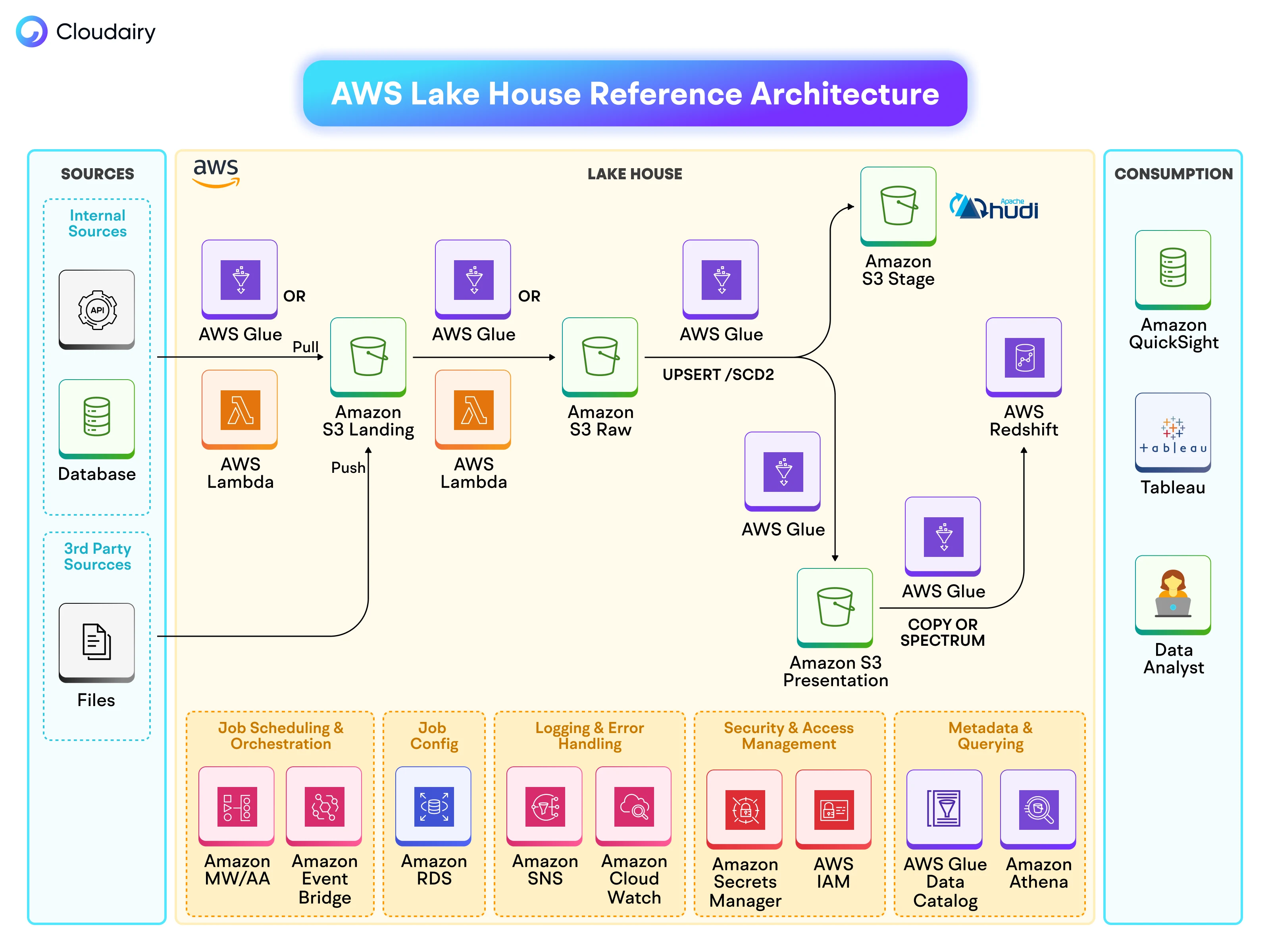



Get your team started in minutes
Sign up with your work email for seamless collaboration.

Today organizations are in the middle of an ocean of information that they daily attempt to steer. I have learned that analyzing big quantities of unstructured data from different sources to provide valuable information and knowledge is not easy. Introducing the Lake House Architecture – That is, how a modern architecture of data uses the benefits of data lakes with the strength of data warehouses.
This blog post explains how to build a super strong and adaptable data storage system (like a lake house) using the best services from the Amazon Web Services (AWS) cloud.
Traditional data warehouses, while excellent for structured data analysis, struggle with the variety and velocity of data generated today. Data lakes address this challenge by providing a cost-effective storage solution for all data types, structured or unstructured. However, they often lack the robust data management, governance, and performance optimization found in data warehouses.
The lake house architecture bridges this gap, offering:
AWS provides a comprehensive suite of services to build a high-performing and scalable lake house:
Data Ingestion:
Data Storage:
Data Catalog and Metadata Management:
Data Processing and Analytics:
Data Governance and Security:
A typical AWS lake house architecture might involve the following steps:
Building a lake house architecture on AWS offers numerous benefits:
The AWS lake house architecture empowers organizations to unlock the full potential of their data by combining the flexibility of data lakes with the robust capabilities of data warehouses. By leveraging the comprehensive suite of AWS services, you can build a scalable, secure, and cost-effective solution that enables you to derive meaningful insights from your data and drive business outcomes.

Cloudairy Cloudchart streamlines AWS Lake House design with a visual, collaborative workspace. Drag-and-drop pre-built shapes for AWS services (S3, Glue, Athena) create clear architecture diagrams. Real-time collaboration ensures everyone is on the same page, while annotations capture data flow, storage, and security details. This centralized documentation fosters a streamlined design process for a well-defined AWS Lake House architecture.
Start using Cloudairy to design diagrams, documents, and workflows instantly. Harness AI to brainstorm, plan, and build—all in one platform.